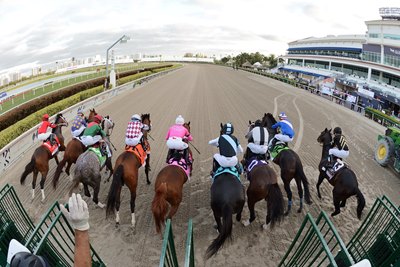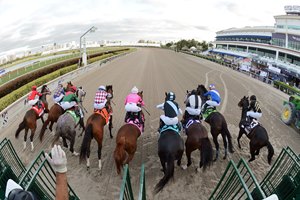COVID-19 Outbreak Halts Strong Wagering Start to 2020


Perhaps the most surprising number in the Thoroughbred Racing Economic Indicators released April 3 by Equibase is that pari-mutuel handle is down only 1% for the first quarter of 2020.
In March, many tracks throughout the United States have been forced to close, and others have run without spectators following the COVID-19 outbreak. The canceled race dates led to nearly a one-third drop in races and a 23% decline in pari-mutuel wagering on U.S. races during the month.
The difficult month, which has been devastating for the U.S. economy in general, ended a strong start to 2020 for racing. Pari-mutuel handle had double-digit percentage growth in both January (11.47%) and February (12.12%). Even in March, the percentage decline in handle was not as dramatic as the decline in race dates—horseplayers supported the available product, largely through advance deposit wagering platforms over the second half of the month when attendance was restricted. Those trends all seem to indicate increased interest in betting races, but the COVID-19 outbreak will put those developments on hold.
Live-racing tracks and horsemen, via purses, receive a much smaller percentage of revenue from off-track wagers than those made on track.
For the quarter, wagering on U.S. races was $2,509,170,169.
Purses improved 1.3% in the first two months of 2020, year over year, to $149,454,640. But that positive trend also ended in March as tracks suspended racing, causing about a 30% decline in purses to $55,774,436 when compared with March 2019. For the opening quarter of 2020, year over year, purses were off 9.64% to $205,227,651. That decline nearly matched the 9.25% decline in first-quarter races in 2020.
Going forward, the missed race dates and suspended operations at casino-type facilities figure to further affect total available purse money. Money from added-gaming operations like casinos and historical racing facilities accounts for more than one-third of U.S. purses.
"Like virtually every industry in the U.S., we in horse racing are grappling with the realities and uncertainties brought about by the COVID-19 pandemic," NTRA president and CEO Alex Waldrop said during an April 1 conference call. Waldrop emphasized that the first priority is the health and safety of the industry's workers and fans.
Industry workers, including those who are self-employed, have a number of options for economic aid, as listed at a special website launched by the NTRA.
|
Thoroughbred Racing Economic Indicators
|
|||
|
For March/First Quarter 2020
|
|||
|
March 2020 vs. March 2019 |
|||
|
Indicator |
March 2020 |
March 2019 |
% Change |
|
Wagering on U.S. Races* |
$731,702,397 |
$945,087,433 |
-22.58% |
|
U.S. Purses |
$55,774,436 |
$79,653,572 |
-29.98% |
|
U.S. Race Days |
214 |
310 |
-30.97% |
|
U.S. Races |
1,787 |
2,678 |
-33.27% |
|
U.S. Starts |
13,919 |
20,427 |
-31.86% |
|
Average Field Size |
7.79 |
7.63 |
+2.11% |
|
Average Wagering Per Race Day |
$3,419,170 |
$3,048,669 |
+12.15% |
|
Average Purses Per Race Day |
$260,628 |
$256,947 |
+1.43% |
|
1st QTR 2020 vs. 1st QTR 2019 |
|||
|
Indicator |
1st QTR 2020 |
1st QTR 2019 |
% Change |
|
Wagering on U.S. Races* |
$2,509,170,169 |
$2,534,968,772 |
-1.02% |
|
U.S. Purses |
$205,227,651 |
$227,119,640 |
-9.64% |
|
U.S. Race Days |
793 |
844 |
-6.04% |
|
U.S. Races |
6,616 |
7,290 |
-9.25% |
|
U.S. Starts |
51,973 |
56,830 |
-8.55% |
|
Average Field Size |
7.86 |
7.80 |
+0.77% |
|
Average Wagering Per Race Day |
$3,164,149 |
$3,003,518 |
+5.35% |
|
Average Purses Per Race Day |
$258,799 |
$269,099 |
-3.83% |
| * Includes worldwide commingled wagering on U.S. races. | |||
